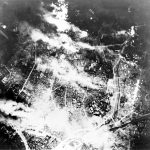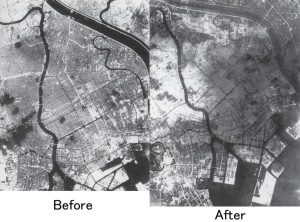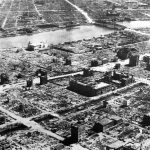 World War II had dragged on long enough. The Axis of Evil nations didn’t seem to care how many of their own people were killed, as long as victory was theirs…typical of any evil nation. It was time to put a stop to this, and the United States, along with the Allied Nations, could see no other solution to the problem, other than fighting fire with fire…literally. This would be the beginning of a horrible new kind of warfare. I’m sure they didn’t come to that decision lightly. While the Japanese were our enemies, the civilian people didn’t really have much say in what they did. Nevertheless, in a war, sometimes civilians are killed. Collateral damage, they call it. It’s a term for deaths, injuries, or other damage inflicted on an unintended target. In American military terminology, it is used for the incidental killing or wounding of non-combatants or damage to non-combatant property during an attack on a legitimate military target. Knowing that the loss of civilian lives is considered “acceptable” in a war, doesn’t make it easy to live with.
World War II had dragged on long enough. The Axis of Evil nations didn’t seem to care how many of their own people were killed, as long as victory was theirs…typical of any evil nation. It was time to put a stop to this, and the United States, along with the Allied Nations, could see no other solution to the problem, other than fighting fire with fire…literally. This would be the beginning of a horrible new kind of warfare. I’m sure they didn’t come to that decision lightly. While the Japanese were our enemies, the civilian people didn’t really have much say in what they did. Nevertheless, in a war, sometimes civilians are killed. Collateral damage, they call it. It’s a term for deaths, injuries, or other damage inflicted on an unintended target. In American military terminology, it is used for the incidental killing or wounding of non-combatants or damage to non-combatant property during an attack on a legitimate military target. Knowing that the loss of civilian lives is considered “acceptable” in a war, doesn’t make it easy to live with.
The prospect was sickening, but something had to be done. So, on March 10, 1945, 300 American bombers  continue to drop almost 2,000 tons of incendiaries on Tokyo, Japan, in a mission that had begun the previous day. The attack destroyed large portions of the Japanese capital and killed 100,000 civilians. Early in the morning on March 10th, the B-29s dropped their bombs of napalm and magnesium incendiaries over the packed residential districts along the Sumida River in eastern Tokyo. The resulting inferno quickly engulfed Tokyo’s wooden residential structures, and the subsequent firestorm replaced oxygen with lethal gases, superheated the atmosphere, and caused hurricane-like winds that blew a wall of fire across the city. The majority of the 100,000 who perished died from carbon monoxide poisoning and the sudden lack of oxygen, but others died horrible deaths within the firestorm, such as those who attempted to find protection in the Sumida River and were boiled alive, or those who were trampled to death in the rush to escape the burning city. As a result of the attack, 10 square miles of eastern Tokyo were entirely obliterated, and an estimated 250,000 buildings were destroyed. When I think about the loss of life brought on by a complete lack of the Japanese government to surrender when they should have.
continue to drop almost 2,000 tons of incendiaries on Tokyo, Japan, in a mission that had begun the previous day. The attack destroyed large portions of the Japanese capital and killed 100,000 civilians. Early in the morning on March 10th, the B-29s dropped their bombs of napalm and magnesium incendiaries over the packed residential districts along the Sumida River in eastern Tokyo. The resulting inferno quickly engulfed Tokyo’s wooden residential structures, and the subsequent firestorm replaced oxygen with lethal gases, superheated the atmosphere, and caused hurricane-like winds that blew a wall of fire across the city. The majority of the 100,000 who perished died from carbon monoxide poisoning and the sudden lack of oxygen, but others died horrible deaths within the firestorm, such as those who attempted to find protection in the Sumida River and were boiled alive, or those who were trampled to death in the rush to escape the burning city. As a result of the attack, 10 square miles of eastern Tokyo were entirely obliterated, and an estimated 250,000 buildings were destroyed. When I think about the loss of life brought on by a complete lack of the Japanese government to surrender when they should have.

This type of bombing was known as area bombing, and was designed to break Japanese morale and force a surrender. I would imagine that morale was seriously broken after such devastating loss of life and property. The firebombing of Tokyo was the first major firebombing operation of this kind against Japan. Over the next nine days, United States bombers flew similar missions against Nagoya, Osaka, and Kobe. Then in August, United States atomic attacks against Hiroshima and Nagasaki finally forced the Japanese surrender. It was an ugly way to have for fight a war, but the Japanese did not seem to care if their own citizens were sacrificed for their evil cause. All they cared about was winning. Thankfully, they didn’t do that either.


2 Responses to Fire With Fire